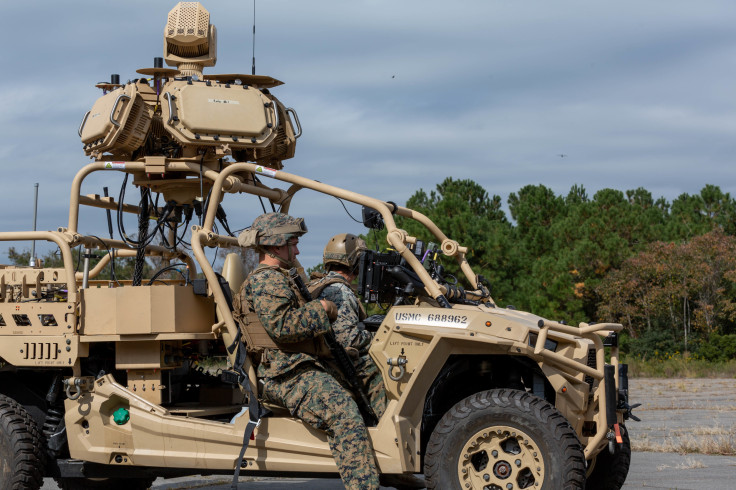Preparing For Drone Era Of Warfare, US Tests Its Newest Drone Killer System
KEY POINTS
- Counter-drone systems have become the key weapon for all current and future conflicts
- The LMADIS gives the force the ability to deter and neutralize unmanned aircraft systems
- China has also unveiled a new defense system — the LW-30 laser defense weapon system
While the use of off-the-shelf, cheap commercial drones ushers in a new era of modern warfare, the U.S. military has tested its newest ground-based drone killer — the Light Marine Air-Defense Integrated System (LMADIS).
The LMADIS gives the force the ability to deter and neutralize unmanned aircraft systems, according to a news release from Marine Corps. The tests were done by the U.S. Marines assigned under the 2nd Low Altitude Air Defense (LAAD) Battalion.
"Due to the current drone threat, we need an expeditionary system that will combat it. The LMADIS serves as a system that can be deployed at a moment's notice and attach to units that need counter-UAS capabilities," U.S. Marine Corps Staff Sgt. Dustin Yonkings, a LAAD gunner with 2nd LAAD, said, as per the news release.
"With the constant evolving of commercial drones, the one thing that won't change is the required frequencies used to pilot any drone," Yonkings added.
The LMADIS mitigates drone threats by disrupting the electronic signals between the UAS and its controller.
The LMADIS reportedly uses electronic weapons set-up on a light and compact frame, the Polaris MRZR — an ultra-light combat vehicle. The system components include the CM262U optic acting as the "eyes" of the system, while the RPS-42 radar and Skyview MP offer 360-degree air surveillance and long-range drone detection. The parts also include the Modi II, a dismountable electronic-warfare system used to disrupt enemy drones and communications alongside the AN/PRC-158 multi-channel manpack radio system, allowing the LMADIS to communicate with troops and commanders.
Apart from the rise in the use of commercial drones, the proliferation of the technology has meant that there is also a growing risk of more and more countries and non-state actors using cheap drones for military purposes and carrying out terror attacks. Counter-drone systems that use cost-effective mechanisms thus become the key weapon for all current and future conflicts.
With the rise in the use of drones, security agencies have been using a range of counter-drone technology for detection, tracking and interdiction that include radar, frequency, acoustic, jamming, spoofing, laser and several others using ground-based, hand-held or airborne systems.
While the U.S. anti-drone systems are considered more advanced, China has been racing to develop its counter-drone systems to bolster its own intelligence and attack capabilities.
China unveiled its new laser-based air defense system on Nov. 11. Called the LW-30 laser defense weapon system, it is capable of taking down small, low-altitude drones. The weapon can launch effective strikes on low, slow and small targets that have a radar cross-section smaller than 1 square meter using high-energy laser beams, according to a report from Chinese state media Global Times.

© Copyright IBTimes 2024. All rights reserved.






















